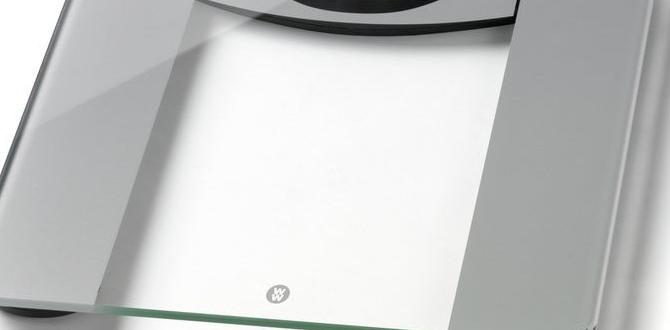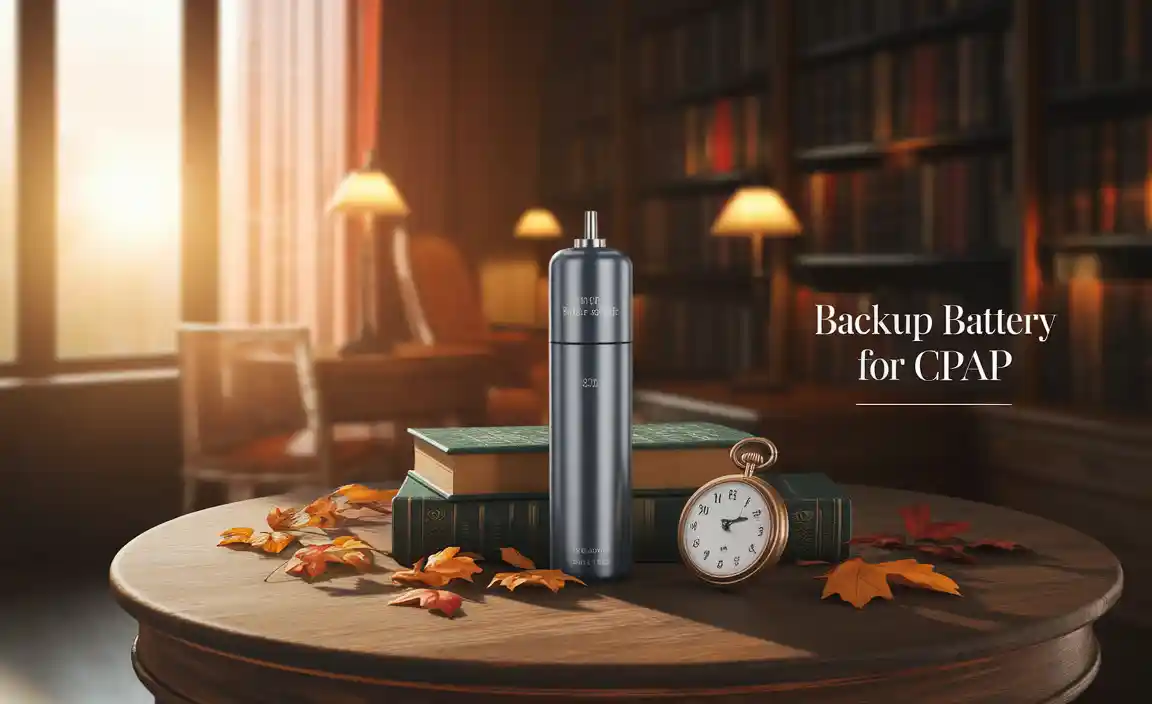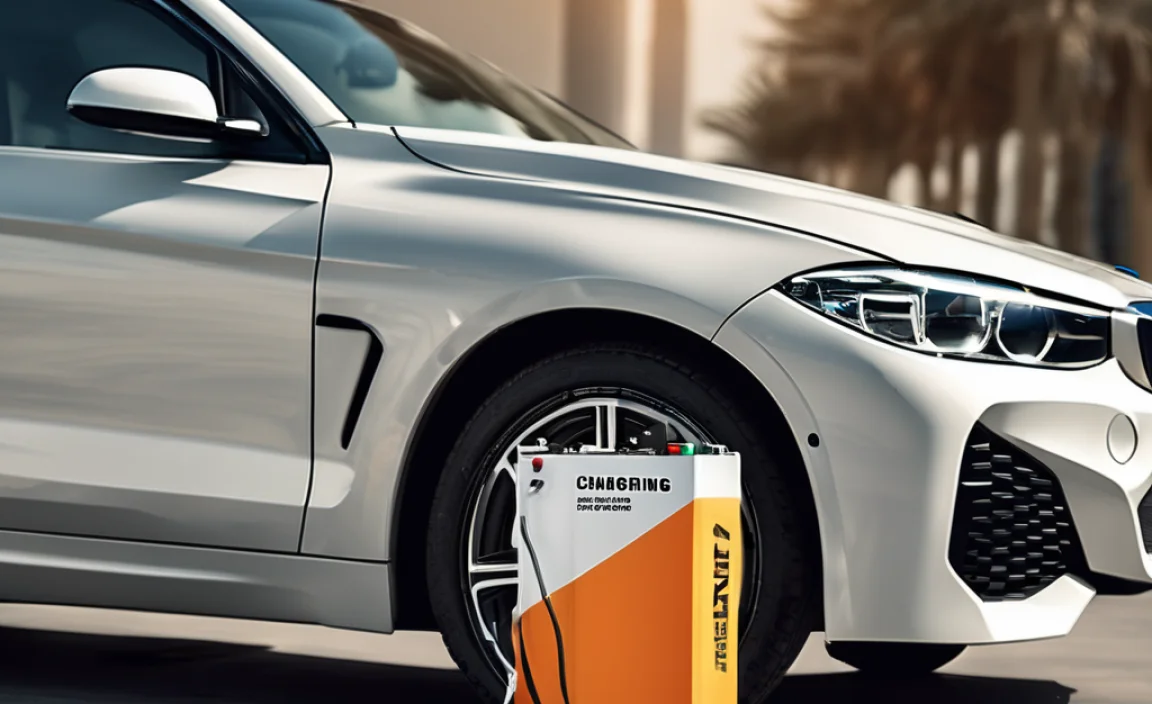A Rivian adapter for Tesla is a simple connector that lets your Rivian electric vehicle (EV) charge at Tesla’s vast Supercharger network. This guide helps you understand how to use it safely and effectively to expand your charging options.
As an owner of a Rivian, you have a fantastic electric adventure vehicle ready for anything. But sometimes, you might encounter a Tesla Supercharger and wonder if you can use it. The good news is, with the right adapter, you absolutely can! Think of it as a little translator for your charging port. This guide will walk you through everything you need to know about using a Rivian adapter for Tesla charging, making your EV journeys even smoother and more flexible. We’ll cover what it is, why you need one, how to choose the right one, and the simple steps to get it working.
Understanding the Need for a Rivian Adapter for Tesla
When electric cars first started appearing, different companies used slightly different ways for cars to plug in and charge. Tesla developed its own charging standard, and for a long time, it was separate from the connectors used by other car manufacturers, including Rivian. However, the world of EVs is becoming more connected. Many Rivian drivers might find themselves near a Tesla Supercharger, which is a very reliable and widespread charging network. To tap into this network, an adapter is the key.
This adapter essentially bridges the gap between the Tesla charging connector and the CCS (Combined Charging System) port on your Rivian. It’s a small piece of technology that unlocks a lot more charging possibilities, especially when you’re on a road trip or in an area where other charging options are scarce. Without it, your Rivian simply wouldn’t be able to plug into a Tesla charger, even if the electricity is there waiting.
How Adapters Work: A Simple Explanation
Think of an adapter like a universal translator for different languages. Your Rivian speaks one “language” for charging (CCS), and Tesla Superchargers speak another (Tesla’s proprietary connector). The adapter takes the signals and physical shape of the Tesla charger plug and converts them so your Rivian can understand and accept the charge.
It’s designed to be a plug-and-play solution. You plug the adapter into the Tesla Supercharger’s cable, and then you plug the adapter into your Rivian’s charging port. The magic happens inside the adapter, where it ensures the communication and electrical connection are correct between the charger and the car. The adapter is crucial for ensuring the right amount of power flows safely and efficiently.
Types of Rivian Adapters for Tesla
The number of adapters available might seem a bit overwhelming at first, but for Rivian owners looking to charge at Tesla stations, there are primarily two main categories to consider:
- Tesla to J1772 Adapter: This is not what you primarily need for DC fast charging at Superchargers, but it’s good to be aware of. This adapter allows a Tesla charger (Type 1 or Type 2 depending on region) to plug into a standard Level 1 or Level 2 J1772 charging port found on many non-Tesla EVs. Your Rivian doesn’t typically use a J1772 port for fast charging, but it might have one for lower-speed charging.
- Tesla to CCS Adapter: This is the one you’re most likely looking for. This type of adapter is specifically designed to allow your Rivian (which uses a CCS port for DC fast charging) to connect to a Tesla Supercharger.
Choosing the Right CCS Adapter: What to Look For
When selecting a Tesla to CCS adapter for your Rivian, here are the key features to keep in mind:
- Compatibility: Ensure the adapter explicitly states it is compatible with Rivian vehicles and Tesla Superchargers (NACS – North American Charging Standard, if you’re in North America). Look for adapters that support CCS Combo 1 for North America or CCS Combo 2 for Europe.
- Build Quality and Safety Certifications: A good adapter will be built solidly with durable materials. Look for certifications that indicate it meets safety standards, such as UL certification in the US. This ensures it can handle the high power flow of Superchargers safely.
- Amperage and Voltage Ratings: While Tesla Superchargers operate at high DC voltages, the adapter needs to be rated to handle the power. Most quality adapters will be designed for this, typically supporting up to 250 Amps or more.
- Ease of Use: The adapter should be easy to plug into both the Tesla charger and your Rivian’s port. Some might have a locking mechanism for added security.
- Brand Reputation and Reviews: Opt for adapters from reputable brands known for EV accessories. Reading user reviews can give you real-world insights into performance and reliability. Companies like Lectron, Tesla (for some situations), and others offer such adapters.
Note: Tesla has been gradually opening its Supercharger network to other EV brands. In many regions, Tesla now provides its own official adapters, or newer Rivians might even come equipped to use Tesla chargers directly without an adapter, depending on the software and hardware updates. Always check with Rivian or Tesla for the most current information regarding compatibility in your specific region.
How to Use a Rivian Adapter for Tesla: Step-by-Step
Using a Tesla to CCS adapter for your Rivian is quite straightforward. Follow these steps for a smooth charging experience:
Step 1: Prepare Your Rivian and the Adapter
Before you head to a Supercharger, ensure your Rivian is ready. Fully charge your phone for any necessary apps. Have your adapter readily accessible in your vehicle, preferably in a bag or designated storage spot so it doesn’t get dirty or lost.
Step 2: Locate and Approach a Tesla Supercharger Station
Use your Rivian’s navigation system or a third-party app like PlugShare or ABRP (A Better Route Planner) to find a Tesla Supercharger station along your route. Drive up to an available charging stall. Most Superchargers have a cable long enough to reach your Rivian’s charging port.
Step 3: Connect the Adapter to the Tesla Charging Cable
Take the charging cable from the Tesla Supercharger. Locate the end of the cable where the Tesla connector is. Now, take your Tesla to CCS adapter. Plug the adapter firmly onto the Tesla connector. You should feel it click or secure into place. Make sure it’s snug to ensure a good electrical connection.
Step 4: Plug the Adapter into Your Rivian’s Charging Port
Open the charging port door on your Rivian. Locate the CCS port. It usually consists of two large pins below a smaller J1772-style connector. Insert the adapter (which is now connected to the Tesla cable) into your Rivian’s CCS port. It should slide in smoothly. Apply gentle pressure until it clicks into place, indicating it’s securely connected.
Step 5: Initiate Charging via Your Rivian’s Interface
Once the adapter is plugged into your Rivian, you’ll need to start the charging session. This is typically done through your Rivian’s touchscreen infotainment system. Navigate to the charging screen. Your Rivian should detect that it’s connected to a charger via the adapter. You might need to tap a button that says “Start Charging” or confirm the charging session.
Important Note on Authentication: In most cases, the charging cost will be handled automatically through your Rivian’s connected account or through the Tesla app if your Rivian is set up to use it for charging. Rivian’s system is designed to communicate with the Supercharger network through the adapter. If you encounter issues, consult your Rivian manual or the charging network’s app for specific instructions.
Step 6: Monitor Charging Progress
You can monitor the charging speed and the estimated time until your battery is full on your Rivian’s display. The Supercharger stall itself may also have indicator lights showing charging status.
Step 7: End the Charging Session
When you’re ready to leave, or when your battery has reached the desired charge level, you’ll need to terminate the charging session. This is usually done from your Rivian’s touchscreen. Navigate back to the charging screen and select an option like “Stop Charging” or “End Session.” Once confirmed, unplug the adapter from your Rivian.
Step 8: Disconnect the Adapter from the Tesla Cable and Store It
After unplugging from your car, detach the adapter from the Tesla charging cable. Store the adapter back in its protective case or bag. Then, neatly coil the Tesla charging cable and plug it back into the Tesla station’s dispenser if required. Ensure you leave the charging stall clean and tidy for the next EV driver.
Tesla Supercharger Network and Rivian: A Growing Partnership
The relationship between EV manufacturers and Tesla’s Supercharger network has evolved dramatically. Historically, Tesla’s charging infrastructure was exclusive to Tesla vehicles. However, as the EV market has matured, Tesla has begun opening its Supercharger stations to other brands. This move is significant for EV owners like those driving a Rivian who can now benefit from one of the most extensive and reliable fast-charging networks available.
In North America, this transition involves the adoption of the North American Charging Standard (NACS) by other automakers. This means that in the future, we are likely to see more EVs, including Rivians, being able to plug directly into Tesla Superchargers without an adapter, or with Tesla’s own officially supported adapters playing a more integrated role. It’s a step towards greater interoperability, making EV travel more convenient for everyone.
Benefits of Using Tesla Superchargers with Your Rivian
The advantages of being able to charge your Rivian at a Tesla Supercharger are numerous:
- Expanded Charging Options: Access to a vast network significantly increases where you can charge, reducing range anxiety, especially on long road trips or in remote areas.
- Reliability: Tesla Superchargers are generally known for their high uptime and consistent performance.
- Speed: Superchargers offer robust DC fast charging capabilities, meaning you can add a significant amount of range in a relatively short amount of time. This minimizes downtime during journeys.
- Convenience: With more stations becoming available, finding a charger is often easier, and the process, while requiring an adapter for now, is becoming standardized.
Potential Drawbacks and Considerations
While convenient, there are a few things to keep in mind:
- Adapter Required: Currently, most Rivians will need an adapter to connect to Tesla Superchargers. This is an extra item to carry and manage.
- Cost and Billing: Charging fees at Tesla Superchargers for non-Tesla vehicles can vary. You’ll need to ensure your Rivian account or associated app is set up correctly for billing. Some networks might charge different rates for non-native EVs.
- Availability: During peak travel times, Supercharger stations can become busy, and you might have to wait for a charger to become available, just like at any other charging network.
- Not All Stations are Open: While many are, not every single Tesla Supercharger station may be equipped to charge non-Tesla vehicles yet. It’s wise to check your charging app.
Safety First: Best Practices for Adapter Usage
Safety is paramount when dealing with high-voltage electrical systems, especially when using adapters. Here are some key safety tips to ensure a smooth and secure charging experience with your Rivian and a Tesla Supercharger adapter:
- Use Reputable Adapters: Always use adapters from well-known manufacturers that meet safety standards. Avoid cheap, unbranded adapters, as they might not have the necessary safety features or robust construction.
- Inspect Adapters Before Use: Before each use, visually inspect the adapter for any signs of damage, such as cracked casing, bent pins, or frayed wires. If you find any damage, do not use it.
- Ensure Secure Connections: Make sure the adapter is firmly and securely connected to both the Tesla charging cable and your Rivian’s charging port. A loose connection can lead to arcing, overheating, or charging failure.
- Never Force Connections: The adapter should plug in smoothly. If you have to force it, stop and check that you are using the correct adapter and aligning it properly with the port. Forcing can damage the adapter or your vehicle’s charging port.
- Avoid Charging in Wet Conditions: While EVs and charging equipment are designed to be water-resistant, it’s best to avoid connecting or disconnecting in heavy rain or while standing in puddles to minimize any electrical risk. Dry your hands before handling the equipment.
- Follow Vehicle and Charger Instructions: Always adhere to the charging instructions provided by Rivian and any on-screen prompts at the Tesla Supercharger station.
- Do Not Tamper with Equipment: Never attempt to modify or repair the adapter or the charging equipment yourself. If there’s an issue, contact the manufacturer or customer support.
- Disconnect in the Correct Order: Always disconnect the adapter from your Rivian first, then disconnect it from the Tesla charging cable.
Troubleshooting Common Issues
Even with the best equipment, you might occasionally run into a hiccup. Here are some common issues and how to tackle them:
1. Adapter Not Recognized by Rivian
Possible Cause: The adapter is not securely connected, or there’s a communication error. The Supercharger might have a temporary glitch.
Solution:
- Unplug the adapter from your Rivian and the Tesla cable.
- Ensure both ends of the adapter are clean and free from debris.
- Reconnect the adapter to the Tesla cable firmly.
- Reconnect the adapter to your Rivian’s charging port until it clicks.
- Try initiating charging again through your Rivian’s touchscreen.
- If it still doesn’t work, try a different Supercharger stall or consult the Tesla app for any station-specific instructions.
2. Charging Starts but is Very Slow or Stops Unexpectedly
Possible Cause: The adapter might not be making optimal contact, or the charging station may have reduced power output. Sometimes, software glitches can occur.
Solution:
- Check the charging status on your Rivian’s screen. If the speed is significantly lower than expected for a Supercharger, try to unplug and replug as described above.
- Ensure the adapter is fully seated in the port to maintain a good connection.
- Restart the charging session.
- If the problem persists, it might be advisable to find another Supercharger station or use a different charging network to rule out an issue with the specific stall.
3. Adapter Gets Stuck or is Difficult to Remove
Possible Cause: The locking mechanism might be engaged or slightly misaligned. Sometimes, thermal expansion can make removal trickier.
Solution:
- First, ensure the charging session has been stopped on your Rivian.
- Gently wiggle the adapter side-to-side while pulling outwards.
- Some adapters have a release button – ensure you are pressing it correctly.
- If it’s extremely difficult, do not force it to the point of breaking.
- Wait for a few minutes for components to cool down (if the car was recently charging), then try again.
- If it remains stuck, contact the adapter manufacturer’s support for assistance.
External Resource: For general information on electric vehicle charging standards and compatibility, the U.S. Department of Energy’s Alternative Fuels Data Center provides valuable insights.
Frequently Asked Questions (FAQ)
| Question | Answer |
|---|---|
| Do I need a specific adapter for my Rivian to charge at a Tesla Supercharger? | Yes, currently, most Rivian vehicles need a Tesla-to-CCS adapter to charge at Tesla Superchargers. Tesla is gradually opening its network, and future Rivian models or software updates might allow direct NACS charging. Always check for the latest compatibility information. |
| Where can I buy a Rivian adapter for Tesla? | You can purchase these adapters from reputable online retailers like Amazon, specialty EV parts websites (e.g., Lectron), or sometimes directly from Tesla or Rivian, depending on their current offerings. |
| Are Tesla Superchargers compatible with all Rivian models? | While the adapter allows connection, compatibility can depend on specific model years and software versions. Tesla is actively working to expand network access. It’s best to verify with Rivian or check Tesla’s Supercharger app for confirmed compatibility in your region. |
| How fast can my Rivian charge on a Tesla Supercharger? | The charging speed will depend on your Rivian’s charging capabilities, the specific Supercharger’s power output (e.g., V2 or V3 Supercharger), and the adapter’s efficiency. Typically, you can expect DC fast-charging speeds that significantly reduce charging time. |
| Is it safe to use a third-party adapter? | It can be safe if you use high-quality adapters from reputable brands that meet safety certifications (like UL). Avoid cheap, unbranded adapters, as they may not have the necessary safety features to protect your vehicle and yourself. |



